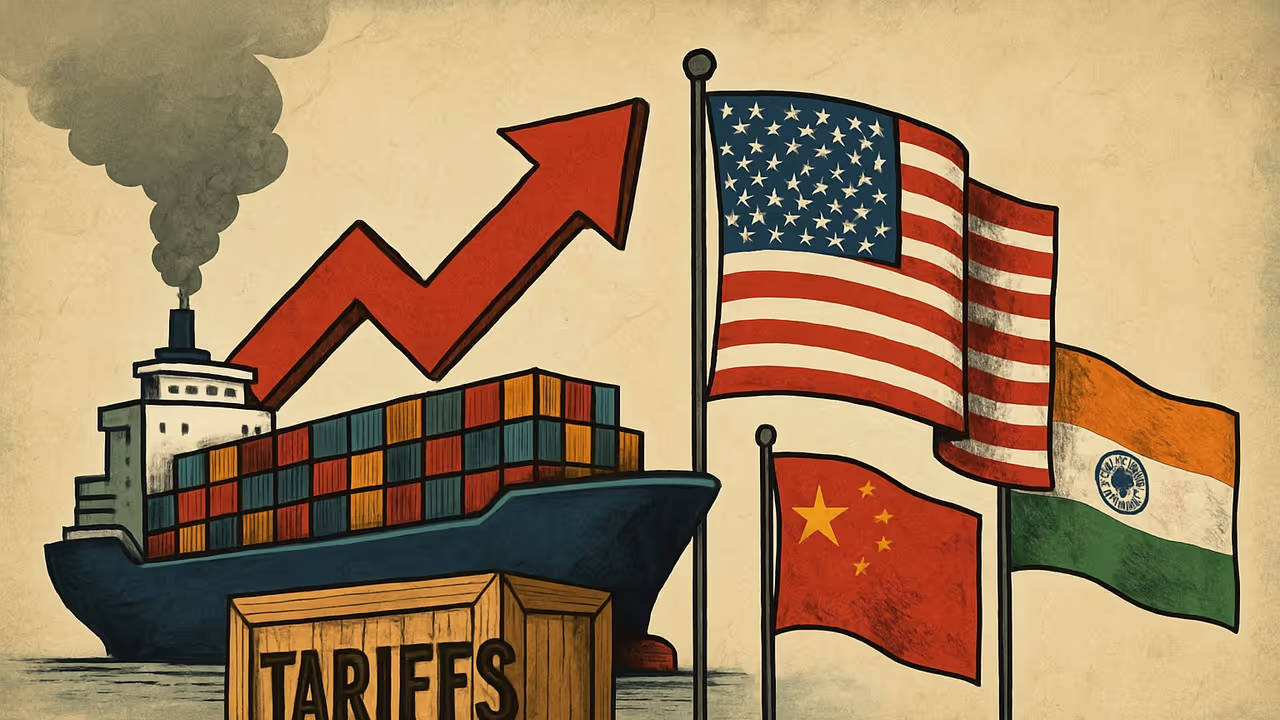An analytical piece on Trump's sweeping 2025 tariffs, their global economic impact, and how India’s strategic restraint could turn disruption into opportunity.
By Gaurav Bhagat, Founder, Gaurav Bhagat Academy: As President Donald Trump’s second term unfolds, economic nationalism is once again reshaping the foundations of global trade. The administration has rolled out a sweeping 10% universal tariff on all imports, effective April 5, 2025. Alongside this blanket measure, reciprocal tariffs have been introduced targeting countries with significant trade imbalances or those that impose steep tariffs on U.S. goods. Chinese imports are now subject to a staggering 145% levy, while Indian goods face a relatively moderate tariff. The underlying objective is to recalibrate U.S. trade relationships, reduce dependency on foreign supply chains, and challenge the prevailing global economic order.

For emerging economies such as India, this policy shift poses both significant challenges and unique strategic opportunities. A thoughtful and measured response could elevate India’s status in the new global trade environment.
Economic Implications: Inflation, Recession, or Reset?
The potential consequences of these tariffs for the U.S. economy are far-reaching. Economic experts forecast that consumer prices could climb by anywhere between 1.4% and 4.5%, translating into an increase in annual household expenses by approximately $1,300 to $2,600. This inflationary pressure is expected to strain household budgets and reduce overall consumption.
In terms of employment, projections indicate that job losses could range from 500,000 to several million, depending on the severity and duration of retaliatory measures and downstream economic effects. Meanwhile, the U.S. GDP is anticipated to shrink by 0.8% to 1.8%, a substantial contraction that could derail ongoing recovery efforts.
On a global scale, these tariffs are expected to dampen trade volumes by 3% to 4%, setting off a domino effect of retaliatory tariffs and protectionist measures. Such a contraction could trigger a broader trade war, particularly as nations struggle to regain post-COVID economic stability amidst rising geopolitical tensions.
India’s Calculated Response
India has responded to the tariff announcement with notable restraint, a strategic decision underscored by the disproportionate focus on China. While Indian exports now face a baseline tariff till July 9 as President Trump put a pause of 90 days to tariffs levied on April 5. This is significantly lower than the punitive 145% imposed on Chinese goods. This differential treatment offers India a unique opportunity to present itself as a viable alternative manufacturing hub for the global market.
Sectors such as textiles and pharmaceuticals may experience short-term challenges due to their export reliance. However, India’s deep industrial capabilities and skilled labor pool provide a foundation for absorbing production demand that is increasingly being diverted away from China. This shift aligns with the “China Plus One” strategy that many global firms are pursuing to mitigate supply chain risks. Reports indicate that multinational companies are actively exploring India as a secondary manufacturing destination, particularly within the growing electronics and pharmaceutical sectors.
Strategic Maturity in a Fragmented World
India’s choice to refrain from immediate retaliatory tariffs demonstrates a mature and forward-looking diplomatic posture. Rather than entering into a tit-for-tat exchange, New Delhi is prioritizing negotiations aimed at securing more favorable trade terms with the United States. This strategic patience enhances India’s image as a stable, reliable partner in a volatile geopolitical climate.
By maintaining robust diplomatic ties with both Western powers and Global South nations, India is positioning itself as a bridge in an increasingly divided world. This balanced approach enhances its economic and diplomatic leverage, while opening pathways to new trade agreements and increased foreign investment. In particular, as global supply chains shift away from China-centric models, India stands to benefit immensely from its neutrality and pragmatism.
Business Imperative: Adaptation and Innovation
For Indian businesses, this moment calls for decisive action. The new tariff environment necessitates a fundamental rethinking of supply chain strategies, with a strong push toward localization. Reducing dependency on imported components will help mitigate the impact of future trade disruptions.
Simultaneously, businesses must pursue market expansion, looking beyond the traditional U.S. corridor to emerging opportunities in Europe, Africa, and Southeast Asia. These regions offer new revenue streams and can serve as buffers against geopolitical risk.
Equally critical is the need for investment in innovation. Enhancing automation capabilities, increasing research and development, and focusing on value-added manufacturing are essential steps to elevate India’s global competitiveness. These efforts will help Indian firms align with international quality standards and gain a larger share of disrupted markets.
Conclusion: Harnessing Power Through Restraint
Though Trump’s tariffs may appear destabilizing, they offer India a rare chance to recalibrate its global trade posture. By responding with restraint and investing in long-term partnerships and innovation, India can turn these global disruptions into catalysts for growth. For businesses and policymakers alike, this is a time not just to endure the changes, but to shape the future by embracing transformation.


